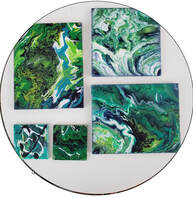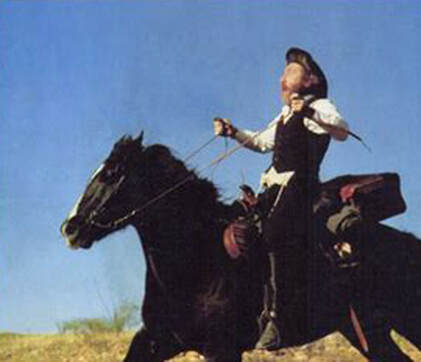|
"How did the messy person make such beautiful art." My 4-year-old granddaughter on Jackson Pollock. There are several layers to this question: One, that Pollock might actually be a messy person (a cursory glance at the history does not reveal the level of veracity of this claim). Two, that his artwork was actually messy, (mmm. maybe). Three, that a four-year-old can confirm that so much of Pollock's work was, in fact, beautiful. How does a messy person make such beautiful art? Pollock was a pioneer in using alkyd enamel paint, focusing for many years on his "drip method." I don't believe the technique was entirely random, nor that he did not have some level of organization (non-messiness) in his studio. There is nothing worse than being "in the zone" and not being able to access the next absolutely necessary tool or color. But there is something that rises from deep inside the artist that, when allowed to escape, creates beauty, however fiery. Or messy. Pollock's art was called "volcanic."  After the mess. With no focal point. After the mess. With no focal point. Somewhat ironically, my granddaughter and I can sit fascinated for long moments watching YouTube videos of acrylic pours. We try to emulate some of this work, and it is a messy project. Evidently my granddaughter is not sufficiently averse to this messiness to help clean up much afterwards. But I digress. I have heard people say, "What is so difficult about acrylic pours? It's just pouring paint." And another, "Where is the focal point?" Just as so many of us (and I have been guilty of this) think of some artwork, "Even a child could do that," or worse, "Even I could do that." Well, yes, some things are like that. (Just like an American Idol contestant whose immediate social milieu convinces them they are a darlin' and the hottest talent since Elvis, the truth will out on the stage.) But some things that look so simple are indeed dancing into beauty, in an almost inexplicable way. This is what I desire as I work in the studio. And it feels like it mostly eludes me. There is a good chance that maybe, just maybe, I need to be messier.
0 Comments
What's so hard about that?My first experience with tapestry was when I was a senior in High School and I took a class at the local YMCA. We wove on basic wooden frames leaned against the wall before which we sat cross-legged on the floor. It seemed a simple thing, if time consuming, and we were young and flexible enough to pursue weaving this way without undue pain. And I certainly thought, "Over under over under, under over under over.....what's so hard about that?" When I returned to the art of weaving so many years later, I still carried with me that idea - that this has to be so simple. Why, then, has it turned into a type of Hydra, with ever increasing numbers of directions and skills to pursue like Hydra's multiplicity of heads. As soon as I think I've grown in skill, there is something else that spins me around, and demands my attention. I cannot stop thinking about a scene in the movie "Frisco Kid." When blocked by a vertical drop down to a swiftly moving river, the experienced protagonist (Harrison Ford) maintains it is safer to go around, while the "greenhorn," Avram (Gene Wilder), says to himself, "That doesn't look so hard." Confused why his "pard" insists on going the long way, Avram sets off after him. Until his horse is panicked by a rattler, gallops toward the cliff and jumps off into the swirling waters below.  I feel like that guy. I've naively muttered to myself, "That doesn't look so hard," then clutched the reins and gone galumphing over the cliff. But what a happy surprise! The water is exhilarating and refreshing; there is much more depth and challenge than I ever expected. There is much to learn, much to play with, and enough to keep me in the saddle for years to come. It's a skill and it's an art. It's often frustrating,. And definitely addicting. I apologize, though. I don't know what the rattler represents in this analogy.... |
carolShares about the process. archives
July 2021
topics
All
|

 RSS Feed
RSS Feed